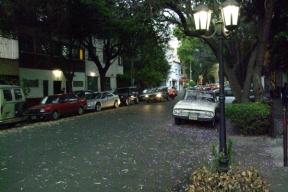I have spent much of this weekend reading and checking the page proofs of The Islanders. A long task, with all of the fears associated with proof-reading that many writers suffer. By the time a book is in proof it’s much too late to make substantive changes, so the things you belatedly notice as infelicities have to be nodded through. Most of the printing errors I was able to correct in The Islanders were tiny: a couple of missing or extraneous commas, an extra blank line that appeared mysteriously on one of the pages, a couple of my own repetitions of words. All were of the same minor ilk. Just over a dozen in all.
Because publishers now habitually set a book’s text from the copy-edited electronic media supplied by the author, accuracy has become almost uncanny, and the perfection can be a distraction. You find yourself reading along, seduced by the apparent lack of errors, and so more likely to miss any that really occur. Things have certainly changed for the better – my first several books were set in letterpress, and when checking the proofs you had to be on your guard at every moment. Some of the compositors’ mistakes were hard to spot, because occasionally one commonly used word would be substituted for another. One of my novels had a phrase that was something like it was more difficult than before … this became in the proofs it was more daffodil than before. I missed this entirely on my first two readings and only happened to spot it by chance just before sending the proofs back. The proofreader at Faber had also missed it, and later rang me up to compare notes, in case there were others.
The real worry is that something dreadful will slip past everyone. Many years ago, Private Eye gleefully pointed out a passage in some terrible old novel by Georgette Heyer, in which a Regency buck, waiting in the drawing room for his belle to appear, passed the time by peeing into a mirror.
In fact, I was late to the game. At the time I started being published, galley proofs (the long sheets with at least three pages of text on them) were being discontinued, to be replaced by the more compact and useful page proofs (either an unbound set of signatures, or, in the case of The Islanders, a stack of A4 sheets formatted with final page layout and measurements). In the old days, the really old days, writers like Charles Dickens used to see the galley proofs as a sort of convenient extra draft and would return them to the hapless publisher with hundreds of changes, huge deletions and thousands of words of additional text. I hope Gollancz will be pleased to adjust my commas.

